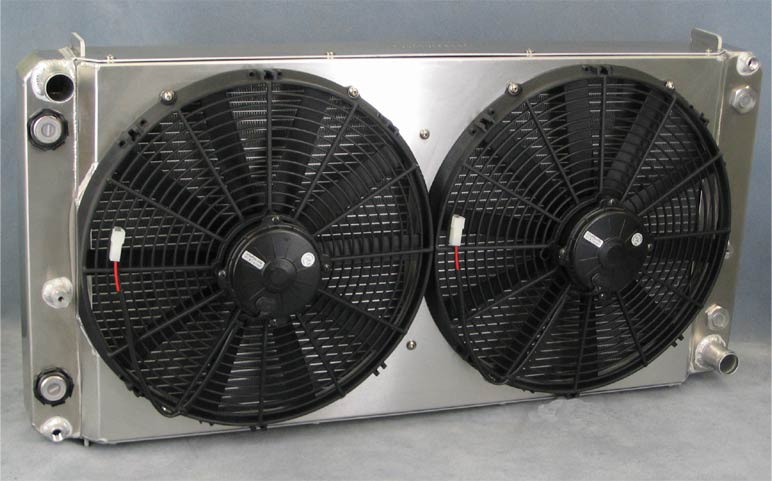CaptainPointless
Petty Officer 3rd Class
- Joined
- Sep 10, 2009
- Messages
- 75
Hey, I have a few questions, and a few musings. Everyone is welcome to share whatever opinions they might have on any of the things I propose, positive or negative.
First, I understand the concept behind deep cryogenic treatment. ie: when an item is treated, the temperature is slowly dropped to around -320 degrees F, and left there for anywhere between 12 and 72 hours depending on the item, and then slowly brought back to ambient. The crystalline structure in the metal is permanently transformed from Austenite (which has a loose, rather disorganized crystalline lattice)

to Martensite (which has a tight, well-organized crystalline lattice).

It follows that the tighter, more organized crystalline structure would provide a stronger, more durable part.
So my first question is this: Does anyone have experience running cryo-treated components in their sterndrive or OB? If so, are they worth the cost of the cryo-treatment? Please refrain from responding if your information is speculative. I would like answers ONLY from people that are ACTUALLY running these components.
Secondly, and this follows the assumption that cryo-treated components are being used: I would like to build a 383 stroker, pushing a relatively high amount of HP (in the realm of ~350 to 375) to power my rebuild. From the research I have done, while Alpha 1 outdrives can physically handle HP approaching those numbers, the longevity of the outdrive is compromised due to the demand on the gearing in the drive. So my second question is this: Again, under the assumption that the gears have been cryo-treated, would the added strength and durability of the gearing offset the added wear produced by the extra torque and HP?
Lastly, I have some thoughts about the actual engine build itself. While working in my last job, we used radiators supplied by Ron Davis Racing Products on the airboats we built.

Believe me, there was a HUGE amount of heat produced by the marinized L92 corvette motors we used. The radiators kept the coolant temperatures quite low, relatively speaking, as well as the oil temps. This is due to the fact that the radiators actually had a high-efficiency oil cooler built in. Would it be feasible to use one of these radiators to not only cool the engine, but to cool the oil in the outdrive remotely? Seems if so, it would be worth the semi-expensive cost of the radiator, thus extending the life of the drive.
Now, have at it!
First, I understand the concept behind deep cryogenic treatment. ie: when an item is treated, the temperature is slowly dropped to around -320 degrees F, and left there for anywhere between 12 and 72 hours depending on the item, and then slowly brought back to ambient. The crystalline structure in the metal is permanently transformed from Austenite (which has a loose, rather disorganized crystalline lattice)

to Martensite (which has a tight, well-organized crystalline lattice).

It follows that the tighter, more organized crystalline structure would provide a stronger, more durable part.
So my first question is this: Does anyone have experience running cryo-treated components in their sterndrive or OB? If so, are they worth the cost of the cryo-treatment? Please refrain from responding if your information is speculative. I would like answers ONLY from people that are ACTUALLY running these components.
Secondly, and this follows the assumption that cryo-treated components are being used: I would like to build a 383 stroker, pushing a relatively high amount of HP (in the realm of ~350 to 375) to power my rebuild. From the research I have done, while Alpha 1 outdrives can physically handle HP approaching those numbers, the longevity of the outdrive is compromised due to the demand on the gearing in the drive. So my second question is this: Again, under the assumption that the gears have been cryo-treated, would the added strength and durability of the gearing offset the added wear produced by the extra torque and HP?
Lastly, I have some thoughts about the actual engine build itself. While working in my last job, we used radiators supplied by Ron Davis Racing Products on the airboats we built.

Believe me, there was a HUGE amount of heat produced by the marinized L92 corvette motors we used. The radiators kept the coolant temperatures quite low, relatively speaking, as well as the oil temps. This is due to the fact that the radiators actually had a high-efficiency oil cooler built in. Would it be feasible to use one of these radiators to not only cool the engine, but to cool the oil in the outdrive remotely? Seems if so, it would be worth the semi-expensive cost of the radiator, thus extending the life of the drive.
Now, have at it!



















